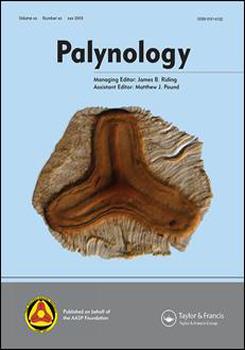Miocene to modern sediments of the Ponto-Caspian basins and Mediterranean Sea are uniquely distinguished by presence of gonyaulacacean cysts with ellipsoid to cruciform endocysts and highly variable ectocystal features, including pterate (wing-like) and galeate (helmet-like) outer wall layers. The term cruciform is defined to indicate cysts with concave epicyst and hypocyst surfaces and moderate dorsoventral flattening. These features may be morphological responses to salinity stress and some biometrical studies conclude that the cruciform Ponto-Caspian species Spiniferites cruciformis of Wall and Dale 1973 and Pterocysta cruciformis Rochon et al. 2003 are morphotypes of the ellipsoidal-subpentagonal Miocene-Holocene species Galeacysta etrusca Corradini and Biffi 1988. We show that the holotypes of these cruciform and rhomboid-subpentagonal galeate taxa differ in endocyst shape, ectocyst structure and attachment points, process morphology, and sulcal plate expression, and we present new data on morphological variations, modern distribution and ecology. We list multiple criteria for distinguishing these taxa from Paratethyan dinoflagellates with shared features, including Thalassiphora spp., Lophocysta, Romanodinium, and Seriliodinium. Log transforms of endocyst:ectocyst (EN:EC) dimensions cannot fully capture cruciformness or galeate and pterate wall characteristics that distinguish the genera, and at DSDP Site 380, EN:EC values for Pleistocene populations of Spiniferites cruciformis and Galeacysta etrusca are significantly different. Re-examination of the history of studies on the Galeacysta etrusca complex and comparison with new studies of Pleistocene to recent cysts leads to the conclusion there is insufficient evidence to justify combining the cruciform species with Galeacysta etrusca and we provide criteria for distinguishing among the main components of the complex. Using multiple morphological features, it appears there is a replacement of large Palaeogene marine-brackish water camocavate-circumcavate taxa with elliptical endocysts first by the Miocene rhombo-subpentagonal galeate species Galeacysta etrusca and then by the Pliocene – Holocene semi-marine–brackish cruciform species Spiniferites cruciformis and stenohaline Pterocysta cruciformis.
How to translate text using browser tools
1 December 2018
Spiniferites cruciformis, Pterocysta cruciformis and Galeacysta etrusca: Morphology and Palaeoecology
Peta Mudie,
André Rochon,
Keith Richards,
Shannon Ferguson,
Sophie Warny
ACCESS THE FULL ARTICLE
It is not available for individual sale.
This article is only available to subscribers.
It is not available for individual sale.
It is not available for individual sale.

Palynology
Vol. 42 • No. S1
December 2018
Vol. 42 • No. S1
December 2018
chronostratigraphy
Cruciform cyst
palaeosalinity
Paratethys
Ponto-Caspian




